Introduction
Silicone rubber molding plays a pivotal role in modern manufacturing, serving as the foundation for producing a vast array of products that we encounter daily. This versatile process boasts a remarkable ability to harness the unique properties of silicone rubber, including its flexibility, heat resistance, and durability. However, like any manufacturing method, silicone rubber molding is not without its challenges and defects. In this article, we will delve into the significance of silicone rubber molding in the manufacturing landscape and shed light on the common challenges and defects that can arise during this intricate process.
Manufacturers across diverse industries rely on silicone rubber molding for creating components that range from critical automotive parts to life-saving medical devices and even everyday consumer goods. Its importance lies in its ability to produce high-quality, precision-engineered parts with exceptional performance characteristics. Silicone rubber’s inherent resistance to extreme temperatures, chemicals, and aging makes it a prime choice for applications demanding durability and reliability.
In the sections that follow, we will explore these common challenges in depth and provide actionable solutions to mitigate or eliminate them. By gaining a deeper understanding of the intricacies of silicone rubber molding and how to overcome its associated defects, manufacturers can ensure that their products meet or exceed the stringent standards of their respective industries. Let’s embark on this journey to unravel the secrets of achieving excellence in silicone rubber molding.
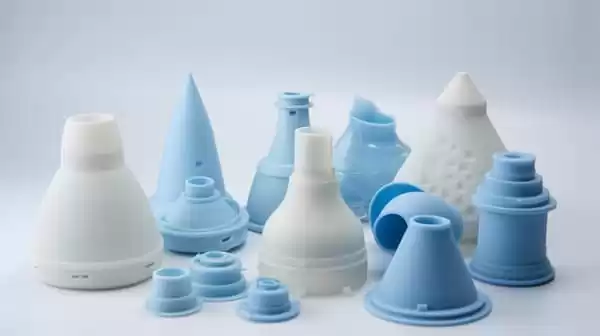
II. Mold Material Defects
Impact on the Final Product
Mold material defects can cast a long shadow over the entire manufacturing process. These defects may include imperfections, impurities, or inconsistencies in the mold material itself. When present, these defects can lead to a range of issues that directly affect the quality and integrity of the final silicone rubber product. Here are some of the ways mold material defects can impact the final product:
Surface Imperfections: Mold material defects can transfer to the molded part’s surface, resulting in irregularities, rough textures, or even sink marks. These imperfections not only affect the aesthetics but can also compromise the functionality of the component.
Reduced Mold Lifespan: Defective mold materials may wear out or degrade more rapidly, leading to a shortened mold lifespan. This can increase production costs and downtime due to frequent mold replacements.
Material Contamination: Impurities in the molding material can mix with the liquid silicone rubber parts used during the molding process, causing material contamination. This contamination can result in structural weaknesses, decreased material integrity, and a higher likelihood of defects in the final product.
Inconsistent Molding: Mold material defects can lead to inconsistent molding, with variations in dimensions and wall thickness, making it difficult to meet precise specifications and tolerances.
Preventive Measures to Avoid Mold Material Defects
Preventing any molding defect and material defects is crucial for ensuring the reliability and consistency of silicone rubber molding. Here are key preventive measures to consider:

Choose High-Quality Mold Materials: Begin by selecting mold materials known for their quality and reliability. Investing in premium-grade materials can significantly reduce the risk of defects.
Regular Inspection and Maintenance: Implement a rigorous inspection and maintenance schedule for your molds. Regularly examine mold surfaces for signs of wear, damage, or defects, and address any issues promptly.
Proper Storage: Store mold materials in a controlled environment that minimizes exposure to moisture, contaminants, and temperature fluctuations. Proper storage can help preserve the integrity of the materials.
Quality Control: Institute strict quality control processes throughout the manufacturing cycle. This includes inspecting incoming mold materials for defects and ensuring their compliance with specifications.
Consultation with Suppliers: Collaborate closely with mold material suppliers who can provide guidance on material selection, handling, and storage best practices.
III. Remedies for Compression Molding Defects
Common Defects in Compression Molding
Incomplete Filling: One of the primary challenges in compression molding is achieving complete material filling within the temperature of the mold cavity. This can result in parts with missing sections or voids.
Surface Irregularities: Surface imperfections, such as rough textures or inconsistencies, can occur, affecting the final product’s aesthetics and functionality.
Warping and Distortion: Compression-molded parts may sometimes experience warping or distortion due to uneven cooling or ejection issues.
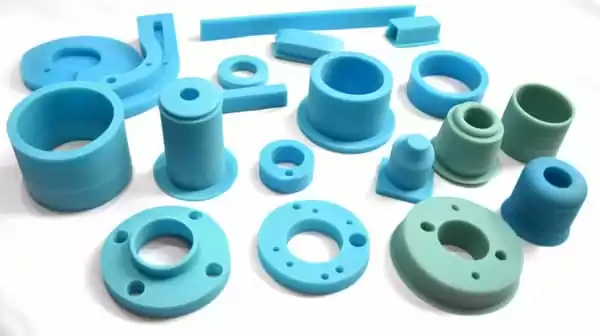
Material Contamination: Contaminants or impurities in the silicone material can lead to structural weaknesses and defects in the molded part.
Remedies and Adjustments
To address these common defects in compression molding, consider the following remedies and adjustments:
Optimize Temperature and Pressure: Adjust the temperature and pressure settings to ensure proper material flow and fill the mold cavity completely. Experiment with different settings to find the ideal combination for your specific material and mold design.
Uniform Material Distribution: Ensure even material distribution within the mold cavity by applying consistent pressure throughout the compression process. This helps prevent incomplete filling and surface irregularities.
Proper Venting: Implement effective venting systems within the mold to allow trapped air to escape during the compression process. Proper venting reduces the risk of voids and improves surface quality.
Use Quality Mold Release Agents: Apply high-quality mold release agents to the mold surfaces to enhance part release and minimize surface imperfections.
Control Cooling Rates: Manage the cooling process carefully to achieve uniform cooling and prevent warping or distortion. Proper cooling helps maintain part integrity.
Material Quality Control: Prioritize using high-quality silicone material, free from contaminants or impurities. Regularly inspect material batches for consistency and purity.
Maintenance and Cleaning: Establish a routine maintenance schedule for your molds. Regularly clean and inspect the mold surfaces for wear, damage, or contamination. Address any issues promptly.
Proper Clamping Force: Ensure that the mold is properly clamped to prevent material leakage and achieve consistent part thickness.
IV. Preventing Plastic Defects
The Significance of High-Quality Plastic Materials
The plastic materials utilized in silicone rubber molding significantly influence the overall quality, durability, and performance of the final product. Here’s why opting for high-quality plastic materials is crucial:
Material Integrity: High-quality plastic materials are less likely to contain impurities, contaminants, or inconsistencies. This ensures that the material maintains its structural integrity throughout the molding process, thereby reducing the risk of defects.
Consistency: Premium plastic materials exhibit consistent properties and behavior. Consistency is essential for achieving uniform material flow, complete mold cavity filling, and controlled cooling, all of which contribute to defect prevention.
Dimensional Stability: Quality plastics are less prone to dimensional changes, such as shrinking or warping, during cooling. This stability helps maintain the accuracy of the final product’s dimensions.
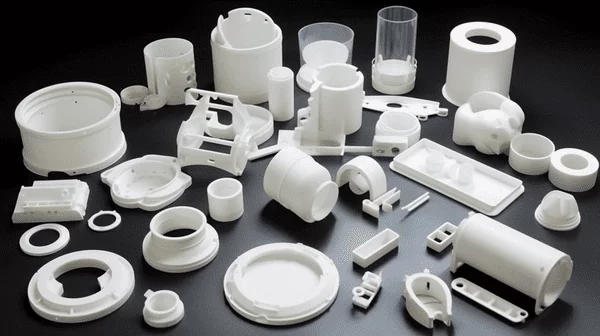
Reduced Material Contamination: High-quality plastic materials are less likely to introduce contaminants into the liquid silicone rubber film, thereby reducing the risk of material contamination and structural defects in the molded part.
Consistent Processing Conditions
Maintaining consistent processing conditions is equally vital in preventing plastic defects in silicone rubber molding. Here’s how consistent conditions can contribute to defect prevention:
Temperature Control: Precise control of material temperature settings during the molding process is critical. Consistent temperatures ensure uniform material flow, reduce the risk of warping, and help maintain part dimensions.
Pressure Regulation: Proper pressure control, including injection pressure and hold pressure, is essential for achieving consistent part density and reducing the likelihood of defects.
Injection Speed: Consistent injection speed helps maintain uniform material distribution within the mold cavity, preventing voids, surface imperfections, and incomplete filling.
Cooling Rates: Managing cooling rates ensures that the material cools uniformly, minimizing the risk of warping, surface defects, and material instability.
Material Handling: Proper handling and storage of plastic materials are crucial to prevent contamination and maintain material integrity. Avoid exposure to moisture, contaminants, and temperature fluctuations.
Quality Control and Monitoring
In addition to using high-quality plastic materials and maintaining consistent processing conditions, thorough quality control and monitoring are essential. Regularly inspect incoming material batches, monitor temperature and pressure settings, and conduct visual inspections of the molding process to detect any deviations or abnormalities.
V. Causes of Defects in Injection Molding
Common Causes of Defects
Improper Mold Design: The design of the mold is a critical factor in injection molding. Defects can occur when mold design lacks precision, has inadequate venting, or improper mold gates locations, leading to issues like flashing or incomplete filling weld lines of the mold cavity.
Inadequate Temperature Control: Temperature control is paramount in injection molding. Variations in mold and material temperatures can result in defects such as warping, surface imperfections, and dimensional instability.
Poor Material Quality: The quality of the silicone rubber material used in injection molding directly impacts the final product. Material defects or inconsistencies can lead to issues like material contamination, voids, and reduced part integrity.
Inconsistent injection parameters processing: Deviations in injection parameters such as pressure, speed, and time can result in defects. Insufficient injection pressure or excessively high excessive injection pressure or speed, for example, can lead to incomplete filling or flow lines.
Improper Mold Venting: Inadequate mold venting can trap air within the mold cavity, causing air bubbles or voids in the molded component.
Material Contamination: Contaminants or impurities in the silicone material can compromise the integrity of the final product and lead to structural defects.
Mold Surface Roughness: Mold surface roughness can transfer to the molded part, resulting in surface imperfections or defects.
Insights into Causes and Prevention
To mitigate defects in injection molding, consider the following insights:
Mold Design: Invest in precise mold design with uniform wall thickness, proper venting channels, and strategically located gates. Address any design flaws promptly.
Temperature Control: Maintain consistent mold and material temperatures throughout the injection process. Use temperature control systems to minimize temperature variations.
Material Quality: Source high-quality silicone rubber material from trusted suppliers. Regularly inspect material batches for consistency and purity.
Injection Parameters: Monitor and adjust injection parameters carefully to achieve optimal material flow, fill the mold cavity completely, and prevent defects like voids and flow lines.
Mold Venting: Implement effective mold venting to allow trapped air to escape during injection, reducing the risk of air bubbles and voids.
Material Contamination: Maintain a clean and controlled manufacturing environment to prevent material contamination. Filter or sieve the silicone material before injection.
Mold Surface Finish: Pay attention to mold surface finish to ensure a smooth finish on the final product. Use mold release agents if necessary.
V. Causes of Defects in Injection Molding
Common Causes of Defects
Improper Mold Design:
The design of the mold is a critical factor in injection molding. Defects can occur when the mold design lacks precision, has inadequate venting, improper gating locations, or doesn’t account for shrinkage, leading to issues like flashing, short shots, or incomplete filling of the mold cavity.
Inadequate Temperature Control:
Temperature control is paramount in injection molding. Variations in mold and material temperatures can result in defects such as warping, surface imperfections, and dimensional instability.
Poor Material Quality:
The quality of the silicone rubber material used in injection molding directly impacts the final product. Material defects or inconsistencies can lead to issues like material contamination, voids, and reduced part integrity.
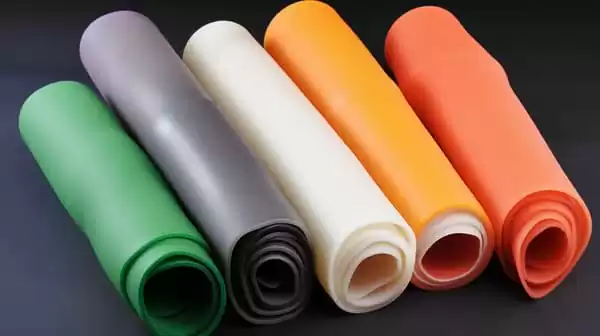
Inconsistent Injection Parameters: Deviations in injection parameters such as pressure, speed, and time can result in defects. Insufficient injection pressure or excessively high injection speed, for example, can lead to incomplete filling or flow lines.
Improper Mold Venting: Inadequate mold venting can trap air within the mold cavity, causing air bubbles or voids in the molded component.
Material Contamination: Contaminants or impurities in the silicone material can compromise the integrity of the final product and lead to structural defects.
Mold Surface Roughness: Mold surface roughness can transfer to the molded part, resulting in surface imperfections or defects.
Insights into Causes and Prevention
To mitigate defects in injection molding, consider the following insights:
Mold Design: Invest in precise mold design with uniform wall thickness, proper venting channels, and strategically located gates. Address any design flaws promptly.
Temperature Control: Maintain consistent mold and material temperatures throughout the injection process. Use temperature control systems to minimize temperature variations.
Material Quality: Source high-quality silicone rubber material from trusted suppliers. Regularly inspect material batches for consistency and purity.
Injection Parameters: Monitor and adjust injection parameters carefully to achieve optimal material flow, fill the mold cavity completely, and prevent defects like voids and flow lines.
Mold Venting: Implement effective mold venting to allow trapped air to escape during injection, reducing the risk of air bubbles and voids.
Material Contamination: Maintain a clean and controlled manufacturing environment to prevent material contamination. Filter or sieve the silicone material before injection.
Mold Surface Finish: Pay attention to mold surface finish to ensure a smooth finish on the final product. Use mold release agents if necessary.
VI.Common Defects and Solutions
1. Air Bubbles:
Defect: Air bubbles are trapped pockets of air within the molded part, which can weaken its structure and affect aesthetics.
Solution: To prevent air bubbles, ensure proper mold venting and use consistent injection parameters, including mold temperature and injection pressure. Venting channels and maintaining adequate mold temperature help air escape during injection.
2. Surface Imperfections:
Defect: Surface imperfections, like rough textures or irregularities, can mar the appearance and functionality of the molded part.
Solution: Achieve a smooth surface finish by maintaining precise mold surface roughness. Proper mold lube application can also enhance the finish.
3. Flash:
Defect: Flashing occurs when excess material escapes from the mold cavity, resulting in unwanted thin projections along the part’s edges.
Solution: Improve mold design and ensure proper mold clamping to prevent flashing. Additionally, control injection pressure, temperature, and injection speed to avoid overfilling.
4. Incomplete Filling:
Defect: Incomplete filling leads to parts with missing sections or voids.
Solution: Adjust injection parameters, including injection speed and pressure, to promote complete mold cavity filling. Proper mold venting can also aid in filling.
5. Warping:
Defect: Warping or distortion can occur due to uneven cooling rates, leading to part deformities.
Solution: Control cooling rates and maintain consistent mold and material temperatures to prevent warping. Achieve uniform cooling through adequate mold design.
6. Material Contamination:
Defect: Material contamination can weaken the silicone rubber and result in structural defects.
Solution: Source high-quality silicone material, maintain a clean manufacturing environment, and filter or sieve materials to prevent contamination.
7. Flow Lines:
Defect: Flow lines are visible lines or streaks on the part’s surface caused by material flow inconsistencies.
Solution: Adjust injection parameters, including injection speed, to promote uniform material flow. Proper mold design and venting can increase injection speed and also help eliminate flow lines.
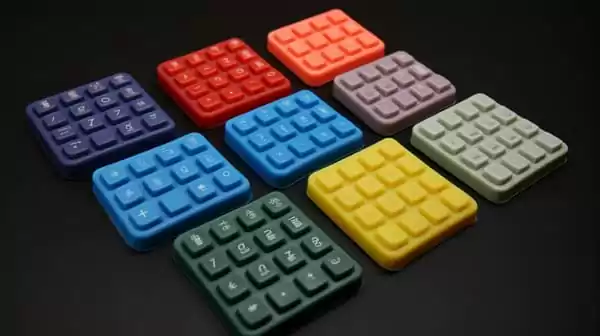
Conclusion
Silicone rubber molding is a highly effective manufacturing method, but it is not without its share of challenges. Common defects can compromise the quality and integrity of the final product. However, by implementing key solutions and best practices, manufacturers can overcome these obstacles and produce high-quality silicone rubber components.
In the world of silicone rubber molding, the pursuit of perfection is an ongoing journey. By embracing these takeaways and emphasizing the importance of continuous monitoring and improvement, manufacturers can not only solve common defects but also enhance the overall quality and efficiency of their silicone rubber molding processes. With each refinement, they move closer to achieving the highest standards of excellence in their manufacturing operations.



